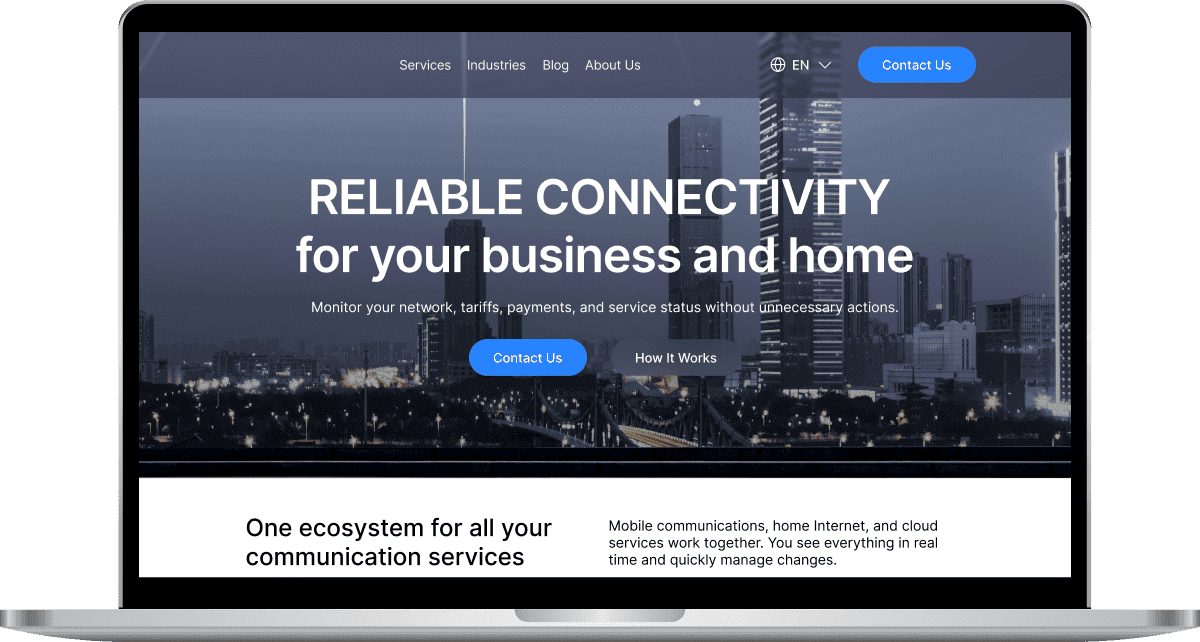- Home
- Case Studies
- Transforming an E-commerce Site Through Strategic QA
May 22, 2024 3 min read
Transforming an E-commerce Site Through Strategic QA
Platforms:
WebCountry:
USAImplementation time:
May 2022 - Nov 2022
Subscribe to Our Newsletter
Stay tuned for useful articles, cases and exclusive offers from Luxe Quality!
About Company
We had an opportunity to partner with an innovative web design and development company based in New York. They develop and design websites from scratch. Additionally, they utilize existing powerful templates to create stunning, customized online experiences for their clients.
Before
The project was introduced to the market without the necessary documentation and a comprehensive testing process.
Challenges and Solutions
Our specialists performed manual and automation testing to identify bugs and usability issues on the website.
Let us share some aspects of the work on this project with you.
Challenges | Solutions |
|---|---|
Lack of comprehensive testing documentation | To address the documentation shortfall, we developed detailed test cases and checklists that were continuously refined throughout the testing phases |
Inefficient deployment and bug tracking | We introduced a structured bug reporting format using GitHub and Bitbucket, streamlining bug identification, logging, and boosting collaboration between testers and developers for a more efficient deployment. |
Suboptimal user experience | Our team implemented targeted improvements to the website's user interface and navigation elements, significantly boosting the overall user experience and engagement |
Integration with third-party services | All third-party integrations were rigorously tested for functionality and reliability. Fallback mechanisms were established for service continuity, and documentation for all third-party services was meticulously maintained and updated |
Technologies, Tools, and Approaches
We want to tell you about the technologies directly related to the testing process.
- JS + Playwright was used for automation.
- GitHub was used for storing and managing test code conveniently. This platform made collaborative work on tests more efficient.
- Bitbucket was used for facilitating teamwork by providing a platform for developers to host, review, and manage Git repositories.
- Allure Report was used for creating informative reports on test progress.
Results
- 450 bug reports were created. They contained detailed descriptions of identified defects, including their nature, severity, and potential impact on the website functionality.
- 25+ test cases were automated, which increased the efficiency of testing.
- 20 usability improvements suggested. During the usability testing, the product's user experience and overall usability were evaluated. As a result, we identified and provided 20 specific suggestions for improvement. These suggestions enhanced the user interface, navigation, and overall interaction with the software, contributing to a more user-friendly and effective product.
Implementation Steps
1. Requirements Gathering
The first step in the implementation process was gathering all the requirements. The team worked closely with the client to understand and document their needs and expectations.
2. Developing Test Scripts
This step involved creating step-by-step instructions on how to execute the tests.
3. Execution of Tests
It is where running the tests and recording the results takes place.
4. Exploratory Testing
We used exploratory testing for a more flexible and unstructured approach. This research-oriented method relied on experience and intuition to identify potential issues.
5. Responsive Testing
Responsive testing was performed, helping to ensure that the website's design and functionality were responsive and optimized for various devices and screen sizes.
6. Analyzing Test Results
At this point, our team carefully examined the test results and documented any discovered issues or bugs.
7. The Teamwork
Collaboration with developers for bug fixes and retesting.
8. Verification of bug corrections
In this step, we validate that the bugs have been successfully corrected.
9. Testing Wrap-Up
This phase involved wrapping up the testing process and preparing a comprehensive test results report.
- Manual testing
- Functional testing
- Automation testing
- Usability testing
- Exploratory testing
- JavaScript

- Playwright

Your project could be next!
Ready to get started? Contact us to explore how we can work together.
Other Projects
Read moreDigital Connectivity Company
USA
•Web, Mobile
About project:
A digital connectivity company offering mobile, internet, and digital communication services.
Services:
- Manual and Automated testing, API, Security, Usability, Cross-browser, Cross-platform testing
- Automated testing -TypeScript + WebdriverIO + Mocha + Appium
Result:
350+ automated regression tests integrated into the CI/CD pipeline, ~50% fewer complaints from clients to support.FULL CASE STUDY
Telecommunications Provider
USA
•Web, Mobile
About project:
The client is a telecommunications provider offering broadband, mobile, and cloud communication services.
Services:
- Manual and Automated testing, API, Smoke, Regression, Performance, Security, Usability, Cross-platform testing
- Automated testing -TypeScript + WebdriverIO + Mocha + Appium
Result:
~70% of regression tests automated, reducing manual QA's involvement in regression cycles by 60%.FULL CASE STUDY
E-Commerce Retailer
USA
•Web, Mobile
About project:
An online E-commerce retailer that provides customers with a seamless online shopping experience through its web and mobile platforms.
Services:
- Manual and Automated testing, API, Usability, Cross-browser, Cross-platform testing
- Automated testing -TypeScript + WebdriverIO + Mocha + Appium
Result:
~80% drop in user-reported issues, critical checkout errors reduced to near zero, predictable, on-time releases for all major updates.FULL CASE STUDY



